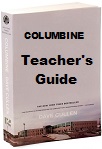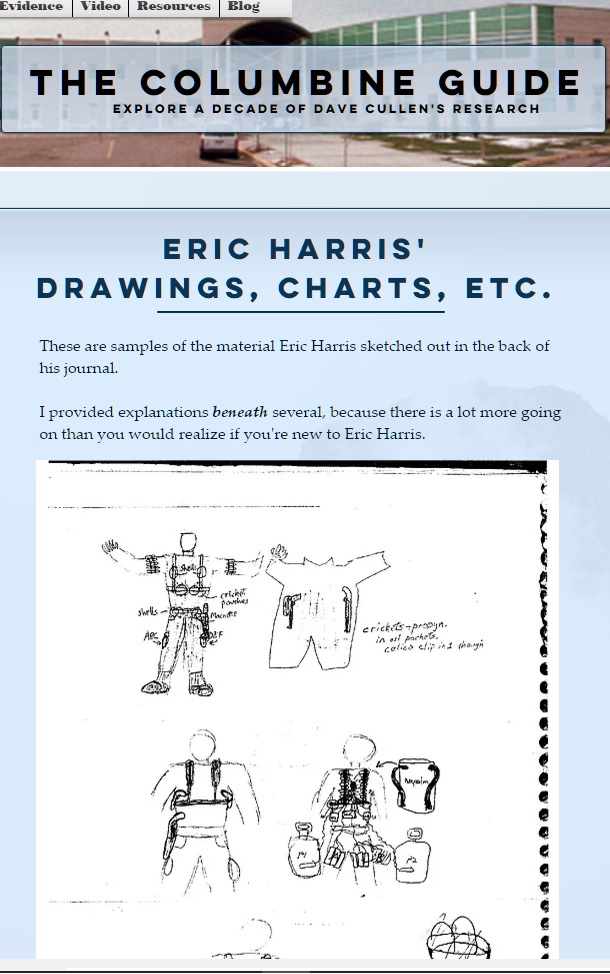Creative Writing Assignments
For writing classes, or engaging students creatively in any class
See the Literature Module for discussion questions on each of these topics.
Character
-
Create a character sketch of one of the principal characters: Eric, Dylan, Mr. D, Patrick Ireland, Dave Sanders, Brian Rohrbough, Misty Bernall or Agent Fuselier. Write “He/she was the kind of guy who…” Think of actions and images not in the book. Put these characters in a different setting and write how they react.
-
Based on what you learned from the book, choose a principal character and invent a story about them unrelated to the Columbine events. Make it hold true to their character. (You may write in first or third person). Principal characters include: Eric, Dylan, Mr. D, Patrick Ireland, Dave Sanders, Brian Rohrbough, Misty Bernall or Agent Fuselier.
-
Select a scene from the book that you found emotional (e.g., Patrick Ireland attempting to walk and talk again; two Eagle Scouts trying to save Dave Sanders from bleeding to death; one of the parents trying to find their missing child April 20, etc.) Replace a primary character from that scene with another character from the book, and rewrite the scene as you imagine it unfolding with the new character (e.g., replace Patrick Ireland with Dylan Klebold, or Misty Bernall with Rev. Marxhausen).
-
Choose a major event from the book, and imagine what would have happened if it had turned out different (e.g., Eric’s parents found his arsenal, the Jeffco cops had exercised the search warrant on Eric’s house, the big bombs exploded, Eric was wounded or killed in the early shootout with Deputy Gardner, a victim had been in another location in the school, the SWAT team had gone directly to Dave Sanders in Science Room 3 . . .) Write a scene based on the new/imaginary scenario as it affected one primary character. Stay true to the character.
Point of View
-
Rewrite the killers’ suicide scene in chapter 52 in the first person, as narrated by either Eric or Dylan. You may invent additional details, imagining what they saw, heard, smelled, though and felt, and how they acted. Choose where to begin and end the scene, and what tone to strike. Is he elated, disgusted, anxious, remorseful . . .?
-
Reread chapter 24, “Hour of Need.” Rewrite the scene of Dylan’s funeral four times in the first person, as told by each of his parents, his brother and Rev. Marxhausen.
-
Rewrite the first paragraph of chapter 20 in the voice of the girl described in the photograph. Invent any necessary details to describe what she went through. Think about what she would choose to tell, and how she would deliver it.
-
Rewrite chapter 1 in the first person of either Eric or Dylan, in the bleachers, describing Mr. D’s speech and the narrator’s reaction.
-
Reread the brief chapter 21, which portrays the early childhood of Eric. Rewrite it in the first person, from Eric’s point of view. You may completely change the information presented in the chapter, inventing as necessary, or leaving it largely unchanged. Think about what Eric would choose to tell the reader about his early life, and how he would present it. Now rewrite it again, as Dylan, thinking about how he would present Eric, and what he would know about Eric’s youth before they met. For an additional exercise, write it again as one of Eric’s parents.
-
Repeat the previous exercise with chapter 23, which portrays the early childhood of Dylan. Write it first as Dylan, then as Eric.
-
Choose any emotional scene in the book, and rewrite it two times, both in the first person: once from the point of view of the primary character, and once from the point of view of a bystander or secondary character. (Example 1: Patrick Ireland going out the library window: write it once by him, and once by a member of the SWAT team racing to catch him. Example 2: Any parent searching for their child April 20: write it once as the parent, and once as a student or teacher observing them and briefly speaking with them. Example 3: Brian Rohrbough chopping down the crosses or trees: once as Brian, once as someone who planted the trees or wants the crosses to stay.) You may fictionalize additional details to flesh out the scene.
Voice
-
Rewrite the killers’ suicide scene in chapter 52 in a completely different style/voice—e.g., eliminating the graphic detail, or in a hyped, melodramatic style.
-
Investigate a piece of news—a real event—unrelated to Columbine. Write about it in the tone of a particular scene from Columbine. Develop characters and setting. Give them thoughts and dialogue based on your research.
-
Reread the first four paragraphs of chapter 43, where Linda Sanders considers the house in Laramie that she will never own with Dave. Now take a real or imaginary victim, and write a short lamentation about something dear to them which they will lose or never attain. Write in the third person, using the same quiet, detached tone of this scene.
-
Rewrite the final scene of the book (the last three paragraphs of chapter 53) in a radically different style and tone. Use the same event—the dedication of the memorial—but change the details presented or words spoken (inventing as necessary), to achieve a completely different effect: e.g., exciting, glum, hopeful, tragic, ominous, foreboding, etc.
Genre
-
Write a poem or memoir about where you were when Columbine happened and how it affected you. Or choose a more recent tragedy such as the Virginia Tech. shooting or the BP oil spill.
-
Choose a scene from the book and rewrite it in another form: e.g., poem, song lyric, play, screenplay, etc.
Structure
-
Read “Part II: After & Before” from Columbine. Take a story you have previously written and split one of your narratives into alternating sections of “before” and “after” a pivotal event in order to learn how to sustain tension in a narrative.
-
Take a story you have previously written and recast it employing flashbacks. You may accomplish this by adding a new backstory, or taking events already written and changing the chronology of when they occurred.




